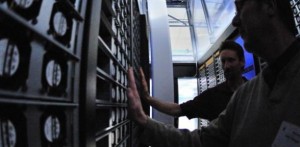See Milldam’s dedicated Data Center Community Relations Service
During the past few years, data centers have increased their presence in the suburbs. In response, many local communities are speaking out and resisting this transformation. For example, two cities in Arizona and communities in Virginia, Connecticut and Oregon are complaining and want to stop future data center development. Data center owners and operators must be aware of this and have a strategy for data center community relations and engagement.
Chandler, Arizona is becoming a popular location for data centers. However, these data centers require a lot of energy and use millions of gallons of water, and produce a humming sound that vibrates through the neighborhoods. As a result, many Chandler residents are unhappy with the data center development and are voicing their concerns.
“It is a loud hum. It’s 24/7 and it’s very irritating because it never goes away,” said Karthic Thallikar a resident of the Britney Heights subdivision which is next to the Cyrus One Data Center. “It enters our rooms, our bedrooms, our living rooms, our backyards, and front yards all year long,” Mr. Thallikar said.
Chandler Vice Mayor Mark Stewart is rethinking the future of Chandler as a data center hub. “We are courting companies internationally from all types of tech industries as well as financial services. We want to target job creators and we want to target companies that will support Intel and Northrop Grumman.”
Residents of communities will continue to voice their complaints as more data centers expand and develop beyond industrial zones. One solution might be the deployment of liquid immersion cooling, which reduces the noise within the data center. Bisnow recently interviewed Milldam President Adam Waitkunas about the public perception of data centers.
From the interview:
Experts point to growing public awareness of data centers and their potential impact amid the rapid digital transformation sparked by the coronavirus. Major outlets routinely run stories about the massive amounts of water and power consumed by data centers or the carbon footprint of data. The data center industry used to talk about “security by obscurity.” Now, citizens and activist groups have more of an awareness of what data centers are and their potential impact, whether real or perceived, on the environment or local quality of life.
Developers are going to have to show face in neighborhoods where they plan to build, he said, and need to have a solid knowledge of what the area’s objections to the project will be before the public process begins. An affluent bedroom community might be concerned about noise, while a working-class town might be more worried about how many jobs will be created.
Additionally, data center developers must add a community relations component to their planning to help tackle the escalating resistance to data center development in residential areas. In the interview, Waitkunas said data center developers should expect local opposition going forward and need to plan accordingly — namely by prioritizing community outreach and anticipating specific community objections. “Community relations is going to have to be the new normal for the data center industry because, especially with the development of the edge, it’s going to be nonstop data center growth,” he said.
To learn more, check out the Bisnow interview about data center perceptions here.
Data Center Public Relations – Data Center Community Relations – Data Center Community Engagement – Data Center PR Firm –



